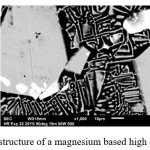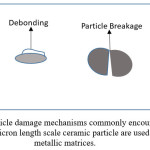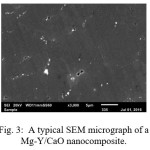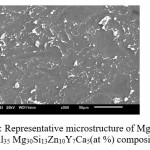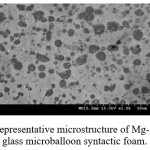Manoj Gupta 
Department of Mechanical Engineering, National University of Singapore, 9 Engineering Drive 1, Singapore 117576
Corresponding Author email: mpegm@nus.edu.sg
DOI : http://dx.doi.org/10.13005/msri/150201
Article Publishing History
Article Received on : 14-May-2018
Article Accepted on : 17-May-2018
Article Published : 23 May 2018
Plagiarism Check: Yes
Article Metrics
Copy the following to cite this article:
Gupta M. Global Emergence and Significance of Magnesium/Technology. Mat.Sci.Res.India;15(2)
|
Introduction
Beginning from early 1990s, scientists are observing an ever increasing trend in changes in weather patterns due to a progressive increase in greenhouse gas emissions, increase in toxicity in land and water bodies and emergence of electromagnetic smog due to spike in the use of electronic gadgets.1-4 The extent of these damages is increasing at an alarming rate never seen before in the history of mankind.
The pollutions based on land, water and electronic gadgets can have a significant local impact, however, the pollution to air can be global and capable of bringing in natural catastrophes beyond the control of humans. Extensive use of fossil fuels for energy/power generation in different industrial sectors has led to greenhouse gas emissions that have reached critical and alarming levels. 5 The current aim is to keep the temperature rise to within 2 oC with respect to preindustrial times and to cut the carbon dioxide emissions by 2 billion tons by 2025.6 This is a challenging task as the transportation sector (particularly automobile and aerospace sectors) is expanding worldwide. Further, irresponsible development of materials and engineering technologies over past century has led to widespread contamination of soil and water bodies leading to adverse health effects on wide spectrum of living organisms including plants, animals and humans. Besides, the surge in electronic devices in day to day life ranging from household (grinders, mixers, TV etc.) to personal equipment (mobile phones, tablets etc.) has exposed humans to dangerous levels of electromagnetic radiation, a carcinogen (Group 2B) as per WHO 7 and fifth largest pollution that we are encountering.8
In order to mitigate the harmful effects of undesirable (toxic) materials (e.g. lead and aluminium) and technologies, conscientious efforts are made specially over last two decades to reduce the dependence on fossil fuels through the use of renewable sources of energy in the energy sector and to lightweight the vehicles in transportation sector. To note is that energy and transportation sector accounts for more than 60% of fossil fuel consumption. 9-11
From the perspective of a materials scientist, a prudent and implementable way to mitigate the greenhouse gas emissions and to preserve land and water ecosystems is to use a lightweight material that is preferably nutritional in nature in the construction of vehicles in automobile, aerospace, space and sports sectors. Such materials should also be exploited in electronic sectors for light weighting mobile phones, laptops besides assisting in cutting down electromagnetic radiations from such devices. It may be noted that electromagnetic shielding capability of magnesium is similar or superior to aluminium (Table 1).
Table 1: Average Total Shielding Effectiveness of Mg and Al samples
|
Sample
|
0.5 – 6 GHz
|
7-13 GHz
|
|
Mg
|
65 ± 1
|
66 ± 4
|
|
Al
|
59 ± 1
|
65 ± 6
|
Aluminium based materials (r ~ 2.7 g/cc) are currently used extensively in transportation and electronic sectors. Aluminium is however neurotoxic in nature and linked to dementia and Alzheimer and therefore needs to be handled with care post-usage to ensure that it does not contaminate planet earth and never to enter food chain. Aluminium based materials can be replaced by magnesium based materials as such a replacement can provide ~ 33% weight saving on part-to-part basis. Magnesium based materials were used in defense and transportation sector way back from 1940s onwards, however, currently there exist only a limited numbers of magnesium alloys that are commercially available with a limited range of properties. 12 This warrants the development of new magnesium based materials with a broad spectrum of properties for applications in diverse engineering and biomedical sectors. Magnesium is particularly targeted recently for biomedical applications (e.g. orthopaedic implants) as it is a nutritional element and is required by plants and animals including humans. The advocated daily intake of magnesium is ~ 240-420 mg/day which is 17-50 times more than that of iron. In human body, for example, it is fourth most abundant cation and second most abundant intracellular cation required for body metabolism.13 Accordingly, its extensive use does not lead to local or systemic toxicity in human body and moreover it will also not toxify the land and water bodies even in the case of illegal dumping by industries. To note is that magnesium is third most dissolved mineral in seawater as well (1.1 kg/m3). 12 Magnesium based materials are also being targeted for this reason as orthopaedic implants (pins, screws, clips, etc.) as they are 13:
- Bioresorbale.
- Exhibit elastic modulus that is closer to bone thus avoiding stress shielding effects.
- Magnesium bio-implant do not need revision surgery and hence patient trauma is avoided.
- Use of magnesium based implants because of point (c) saves doctor’s time and medical treatment cost.
Further, magnesium based materials are also targeted as cardiovascular stents in order to minimize risk of chronic inflammation and late thrombosis thus showing potential in assisting effective treatment of arterial diseases [14]. In view of their potential they are also categorised as third generation biomaterials.
To enhance the usage of magnesium based materials, it is important to develop new magnesium based materials using both compositional control and composite technology. Worldwide efforts are being made to develop new magnesium alloys that are superior to currently available alloys in terms of mechanical (hardness, strength, fatigue, creep etc.) and corrosion properties. An example in that direction is the qualification of WE43 magnesium alloys which is recently approved by FAA for aerospace applications. In yet another study, investigators improved the properties of magnesium through compositional control to bridge the gap with steels providing yet another option to materials selectors to diversify the usage of magnesium. 15 More work is also being done to develop high entropy alloys based on magnesium as high entropy alloys normally exhibit complex microstructure and high strength and hardness properties. A typical microstructure of a magnesium based high entropy alloy is shown in Fig. 1.
Figure 1: Microstructure of a magnesium based high entropy alloy
Composite technology provide alternative option to enhance a multitude of engineering properties of base matrix irrespective of type of metallic matrix. 15 To enhance the properties, the choice of reinforcement is most important and in recent years following reinforcements have been successfully used 15-18:
- Interconnected reinforcement in millimetre length scale. 12
- Amorphous/metastable reinforcement in micron length scale. 17
- Ceramic reinforcements in micron, submicron and nano-length scales. 15-18
- Metallic Reinforcements in both micron and nano- length scales.12,13
- Hollow reinforcements in both micron and nano-length scales. 18
Various research studies conducted on these reinforcements indicated that while certain reinforcements enhances more targeted properties in certain length scales, metal based reinforcements (amorphous, metastable and elemental metals) are more efficient in improving a spectrum of properties without a compromise in ductility in micron length scale primarily due to following two reasons.
- Their ability to develop good bonding with metallic matrix (superior wettability).
- They do not crack easily unlike ceramic particles.
Accordingly, the particle damage mechanisms as observed in micron length scale ceramic particles (Fig. 2) are largely absent when the metal based reinforcement is used.
Figure 2: Particle damage mechanisms commonly encountered when micron length scale ceramic particle are used in metallic matrices
Reinforcement at nano length scale irrespective of their metallic or ceramic nature are very effective in simultaneously increasing a wide range of thermal, mechanical and corrosion properties of magnesium through microstructural and textural control. 19 Some of the enhancement of properties realized through the use of nano-reinforcements are:
- Increase in tensile and compressive strength such as observed in Mg-B4C system.
- Increase in ductility such as observed in Mg-Al2O3 system.
- Increase in high temperature strength such as observed in Mg-Y2O3 system.
- Increase in creep resistance such as observed in Mg-5Sn-2Y-1.5ZnO system.
- Increase in dynamic properties such as observed in AZ31-Al2O3 system.
- Increase in fatigue properties such as observed in AZ31-Al2O3 and AZ31-CNT systems.
- Increase in machinability such as observed in Mg-BN, Mg-ZnO and Mg-Al2O3 systems.
- Increase in wear resistance such as observed in AZ31-Al2O3 system.
- Increase in oxidation resistance such as observed in AZ31-Al2O3 system.
- Increase in wet corrosion resistance (NaCl solution) such as observed in AZ31-Al2O3 system.
- Increase in wet corrosion resistance (DMEM + 10% FBS solution) such as observed in Mg-TiC, Mg-TiO2 and Mg-TiN systems.
- Increase in ignition temperature such as observed in Mg-ZnO system.
A typical microstructure of a magnesium based nanocomposite is shown in Fig. 3.
Figure 3: A typical SEM micrograph of a Mg-Y/CaO nanocomposite
Similarly the use of amorphous/metastable reinforcements including based on high entropy alloys (HEA) prepared primarily using solid phase methods have been effective in 17:
- Improving the strength without compromising in ductility such as observed in Mg-Ni60Nb40 system.
- Improving the hardness such as observed in Mg-Ni60Nb40 system.
- Improving the damping such as observed in Mg-(Al85Ti15) system.
- Improving high cycle fatigue such as observed in Mg-Ni60Nb40 system. 20
Further work is required to develop this class of composites as the micron length scale reinforcement can be loaded to a higher extent in magnesium matrix further assisting in improving tribological properties and elastic
modulus. A typical micrograph of Mg-HEA composite is shown in Fig. 4.
Figure 4: Representative microstructure of Mg-HEA (Al35 Mg30Si13Zn10Y7Ca5(at %) composite
For the case of hollow reinforcements (syntactic/foam composites) which are capable of further reducing the weight of magnesium, the main beneficiary properties are 21:
- Hardness such as observed in Mg-Cenosphere (hollow fly ash particles) system.
- Compressive strength and ductility such as observed in Mg-Cenosphere system.
Based on its superior performance under compressive loading, such materials are expected to perform better under dynamic loading conditions and can be potential candidates in crash prone locations such as in rear bumpers of cars. More work is required to unleash the potential of syntactic/foam composites. A typical micrograph of magnesium based syntactic composite is shown in Fig. 5.
Figure 5: Representative microstructure of Mg-15 wt. % glass microballoon syntactic foam
The successful utilization of conventional liquid phase (stir casting) and solid phase (powder metallurgy) techniques without any extra infrastructural development to develop magnesium based materials is currently paving the way for magnesium based materials as potential candidates in a widespread applications in sports, transportation, defense and electronic sectors. Further, solid state joining techniques such as friction stir welding have been successfully used to join magnesium with magnesium and magnesium with aluminium. Efforts are also being made to 3D print magnesium based materials using laser, binder and binder-less methods for the specialized parts.
In view of its tremendous potential many countries have adapted to growing magnesium market and notable examples are China, UK and South Korea while other countries like Japan, Germany, and USA are following the suit. For other countries like India, African nations and Middle East countries, it is time to adapt or miss the bus.
Acknowledgments
The authors would like to acknowledge the Ministry of Education Academic Research Funding (WBS# R-265-000-586-114) for the financial support in carrying out this research work.
References
- IPCC, Summary for Policymakers. In: Climate Change 2007: The Physical Science Basis. Contribution of Working Group I to the Fourth Assessment Report of the Intergovernmental Panel on Climate Change [Solomon S., Qin D., Manning M., Chen Z., Marquis M., Averyt K. B., M.Tignor and Miller H. L. (eds.)]. Cambridge University Press, Cambridge, United Kingdom and New York, NY, USA. http://www.ipcc.ch/publications_and_data/ar4/wg1/en/spm.html. 2007.
CrossRef
- Gupta M., Gupta N. Utilizing Magnesium based Materials to Reduce Green House Gas Emissions in Aerospace Sector. Aeron Aero Open Access J. 2017;1(1):1-6.
CrossRef
- Gupta M. Magnesium Based Materials: Nature’s Choice to Relieve Strain on Environment and For Welfare of Living Beings. JOJ Material Sci. 2017;1(3):555564.
- Pandey R., Tekumalla S and Gupta M. Effect of Defects on Electromagnetic Interference Shielding Effectiveness of Magnesium. Journal of Materials Science. 2018. Materials in Electronics. Accepted on 26th March (Manuscript No. – JMSE-D-18-00537).
CrossRef
- http://www.npr.org/sections/thetwo-way/2017/06/01/531048986/so-what-exactly-is-in-the-paris-climate-accor.
CrossRef
- Gupta M., Gupta N. The Promise of Magnesium Based Materials in Aerospace Sector. Int J Aeronautics Aerospace Res. 2017;4(1):141-149. doi: dx.doi.org/10.19070/2470-4415-1700017. 2017
CrossRef
- Gupta M and Tun K. S. Light Weight High Entropy Alloys: Processing Challenges and Properties, Recent Patents on Materials Science. 2018. March 27. Accepted for publication.
CrossRef
- IARC classifies Radiofrequency Electromagnetic Fields as possibly carcinogenic to humans. World Health Organization. 2011;May 31.
CrossRef
- Jiang S. X and Guo R. H. Surf Coat Tech. 2011;205:4274-4279.
CrossRef
- Quéré C. L., Jain A. K., Raupach M. R., Schwinger J., Sitch S., Stocker B. D., Viovy N., Zaehle S., Huntingford C., Friedlingstein P., Andres R. J., Boden T., Jourdain C., Conway T., Houghton R. A., House J. I., Marland G., Peters G. P., Der Werf G. V., Ahlström A., Andrew R. M., Bopp L. C., Kato J. G. E., Ciais P., Doney S. C., Enright C., Zeng N., Keeling R. F., Goldewijk K. K., Levis S., Levy P., Lomas M., Poulter B. The global carbon budget 1959–2011. Earth Syst. Sci Data. 2013;5:165–185.
CrossRef
- International Energy Agency, CO2 Emissions from Fuel Combustion 2012. Organisation for Economic Co-operation and Development. 2012. http://www.iea.org/media/statistics/co2highlights.pdf
CrossRef
- Magnesium., Magnesium Alloys and Magnesium Composites, Gupta M and Nai S. John Wiley. 2011.
CrossRef
- Insight into Designing Biocompatible Magnesium Alloys and Composites, Gupta M and Meenashisundaram G. K. Springer. Brief. 2015.
CrossRef
- Ivanova E. P., Bazaka K and CrawfordR. J. New functional biomaterials for medicine and healthcare. Cambridge Univ Press. 2014.
CrossRef
- Chen Y., Tekumalla S., Guo Y. B. , Gupta M. Introducing Mg-4Zn-3Gd-1Ca/ZnO Nanocomposite with Compressive Strengths Matching/Exceeding That of Mild Steel, Scientific Reports 6, Article number 32395. 2016. doi: 10.1038/srep32395.
CrossRef
- Aluminum and Magnesium Metal Matrix Nanocomposites, Ceschini L., Dahle A., Gupta M., Eric A. W., Jarfors S. J., Morri A., Rotundo F., Toschi S. R.,Singh A. Springer. 2016. ISBN: 978-981-10-2680-5 (Print) 978-981-10-2681-2 (Online).
- Metallic Amorphous Alloy Reinforcements in Light Metal Matrices, Jayalakshmi S and Gupta M., SpringerBrief. 2015
CrossRef
- Manakari V., Parande G., Doddamani M., Gupta M. Enhancing the ignition, hardness and compressive response of magnesium by reinforcing it with hollow glass microballoons, Materials. 2017;10. 997 doi:10.3390/ma10090997.
CrossRef
- Gupta M and Wong W. L. E. Magnesium-Based Nanocomposites: Lightweight Materials of the Future. Materials Characterization. 2015;105:30-46.
CrossRef
- Nafar J. D.,Marquis G., Sankaranarayanan S and Gupta M. Fatigue Crack Growth Behavior of Amorphous Particulate Reinforced Composites. Composite Structures. 2016;153;782-790.
CrossRef
- Manakari V., Parande G.,Gupta M. Effects of Hollow Fly-Ash Particles on the Properties of Magnesium Matrix Syntactic Foams: A Review. Materials Performance and Characterization 2016;5(1):116-131.
CrossRef

This work is licensed under a Creative Commons Attribution 4.0 International License.
 Material Science Research India An International Peer Reviewed Research Journal
Material Science Research India An International Peer Reviewed Research Journal


